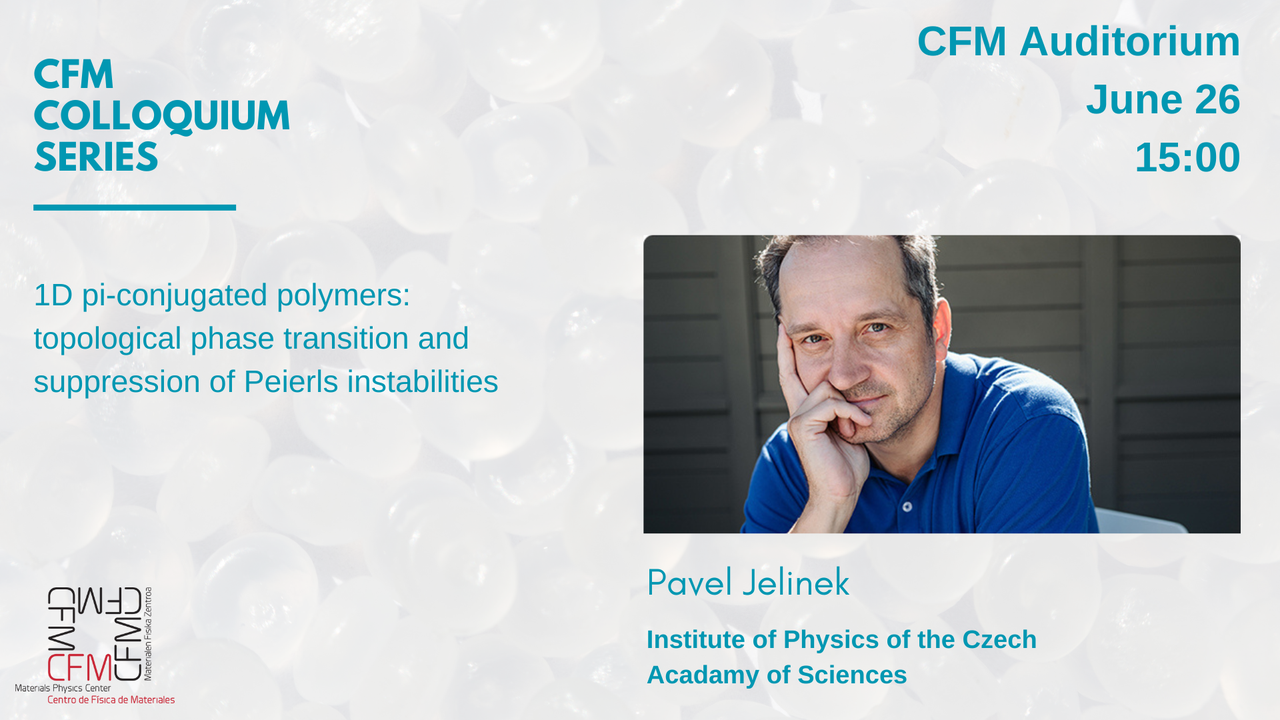1D pi-conjugated polymers: topological phase transition and suppression of Peierls instabilities
CFM Seminars
- Speaker
-
Pavel Jelinek
Institute of Physics of the Czech Acadamy of Sciences - When
-
2025/06/26
15:00 - Place
- CFM Auditorium
- Host
- Andres Arnau Pino
- Add to calendar
-
iCal

CFM COLLOQUIUM SERIES
Recent progress in on-surface chemistry has enabled the synthesis and characterization of novel p-conjugated carbon molecular systems with unprecedented properties. This route, complemented with high-resolution scanning probe imaging (SPM), provides new opportunities to understand in detail their chemical and physical properties, including the emergence of magnetism in such materials.
In the first part, I will discuss the topological phase transition in acene ethynylene-bridged polymers, revealing a direct connection between topology and p-conjugation [1]. I will show that the quantum phase transition is defined by the length of the polymer, triggering the transition from a topologically trivial to a non-trivial phase above a certain polymer length [2]. Furthermore, I will introduce an experimental protocol that enables us to precisely control the quantum phase of the π-conjugated polymer via a highly selective hydrogenation process of the polymer and subsequent atomic-scale manipulation. I will also demonstrate that the pseudo Jahn-Teller effect is the driving mechanism responsible for the quantum phase transition. I’ll also discuss the interaction of edge states between two topologically non-trivial polymers [3].
In the second part, I will briefly review the Peierls transition, a fundamental concept in condensed matter physics, which predicts that a one-dimensional metallic chain must undergo a metal-to-insulator transition via lattice distortion. I will show that the Peierls transition can be globally suppressed by employing topology engineering of classic trans-polyacetylene chains connected to open-shell nanographene terminals with sublattice imbalance.
[1] B. Cierra et al, Nature Nano, 15, 437 (2020)
[2] H. Gonzalez-Herroro et al Adv. Mat. 33, 2104495 (2021)
[3] A. Jimenez et al, ACS Nano 18, 29902 (2024)
